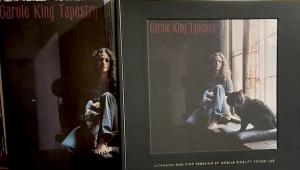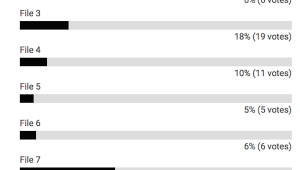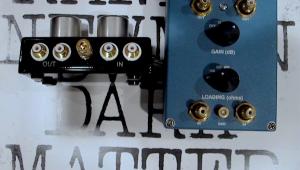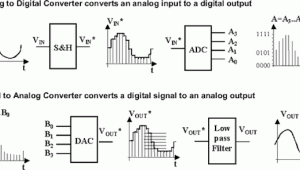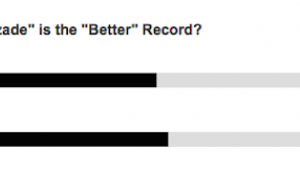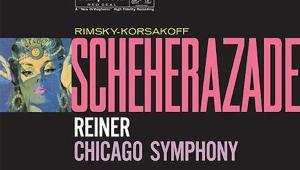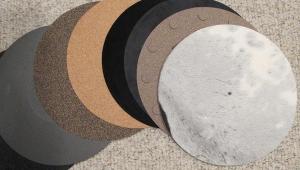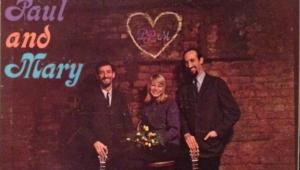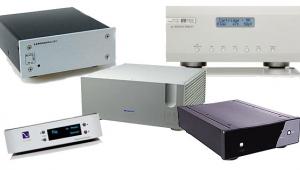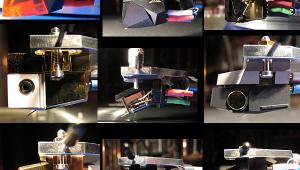The "Tapestry" Reveal!
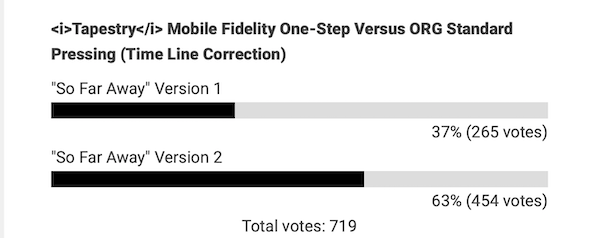
You could buy them or once you found out they were CD sourced and cut by “A. Nonymous”, ignore them so no harm done, right? Not quite. The 4 Men folks had excellent and adventurous musical tastes. Often, the label would sign a longterm licensing deal that blocked for many years more serious “cut from tape” players from producing an AAA reissue of the same title. Sometimes, but not often, a competing label could get the license but only for a double 45rpm reissue.
I can’t remember specific titles but I recall asking Mobile Fidelity, Analogue Productions and Classic Records about some attractive reissue titles only to be told that 4 Men had it “locked up” for a long time.
I cite this background to explain why I chose to run this Tapestry comparison. It’s not to “embarrass” anyone though I only embarrassed myself by whining that Mobile Fidelity had stopped sending me promo records when for the most part they had not. The “pipeline” had shut down releases so despite announcing a boatload, including “One Steps” of the Eagles and Van Halen catalogues the label had not actually issued them.
Tapestry had been released and no promo arrived—and I don’t call asking where’s “my” copy— so when a reader generously offered to send one, I accepted the offer.
Over the decades the various iterations of Mobile Fidelity—starting in the 1970s when Herb Belkin founded the company, to when it exited and then re-entered the vinyl business under Belkin with the Anadisc 200 series and then onto the new ownership—have had their share of spectacular successes and occasional failures. I’ll just list some successes: Beck’s Sea Change, the entire Elvis Costello and Miles Davis catalogues and I could go on. The One-Steps got off to an equally spectacular start with Santana’s Abraxas and the more recent Monk’s Dream.
I’m not going to list the failures but most of them, starting with the original Japanese “Super Vinyl” series back in the late ‘70s had “smiley face” EQ—boosted bass and treble leaving a midband valley “suckout”.
I thought the Mo-Fi mastering team had left that all behind—especially considering how deft was their work on Jeff Beck’s Truth — until I heard this Tapestry One-Step. And by the way I do have Mobile Fidelity’s “standard” 33 1/3 pressing (MFSL 1-414) mastered by Krieg Wunderlich assisted by Rob LoVerde and it’s a far more honest rendering of what clearly was not a great recording to begin with. They may have slightly “touched up” the bottom but only slightly, and the mids where King’s voice resides is full, rich, natural sounding only slightly impeded by whatever touch up they made on the mid-bottom. They made no attempt to add “fairy dust” on top so the mix remains coherent honest and “is what it is”. It’s a 100% successful reissue IMO.
It seems that the pressure was on (real or imagined) to make the “One Step” more better but instead….well “Version 1” is the One-Step and “Version 2” is the ORG. 63% to 37%—and not because the One-Step was cut “less hot” so the 2dB or so volume difference tilted the playing field.
AnalogPlanet readers preferred “Version 2” for the same reasons I did. It’s there in the comments, though a minority preferred the One-Step.
Circling back to the top of this story: Mobile Fidelity has “locked up” some really great titles and just in case they’re all not cut, plated and waiting for press time—and for future licensed titles—please give music fans what’s on the tape—minor touch ups always allowed—but please do not try to create some new sensation in order to justify the “One-Step” process and price. Give fans what's on the tape, not a “reimagining” that attempts to make it better than it is. And if when you play the tape, it sucks, either because it wasn’t that great in the first place, or the tape has deteriorated, especially with a costly “One Step”, pass! That goes for every reissue label.
Speaking of which, some readers think I “have it in” for Mobile Fidelity and am somehow “allied” with Analogue Productions, so here are two 1 minute files: one an original pressing of John Lee Hooker’s Serves You Right To Suffer (Impulse A-9103) obviously at 33 1/3 and the other the Analogue Productions double 45 from 2010 in a deluxe package. I’d have passed! No vote this time, but which do you prefer and why? And which is which? (There is a level difference necessitated by my A/D converter).
